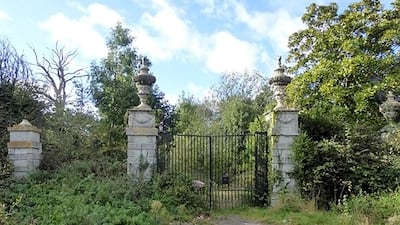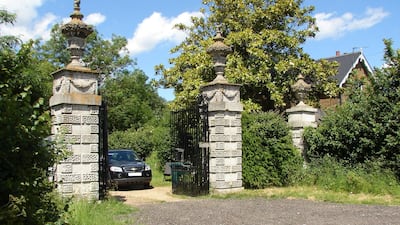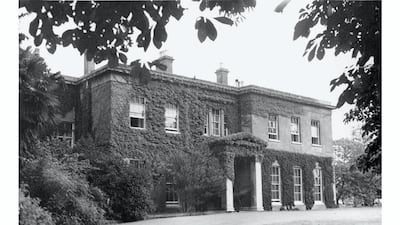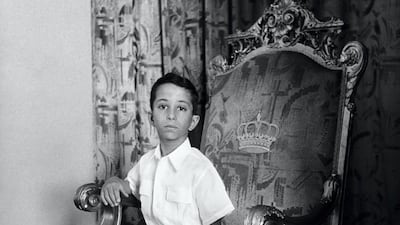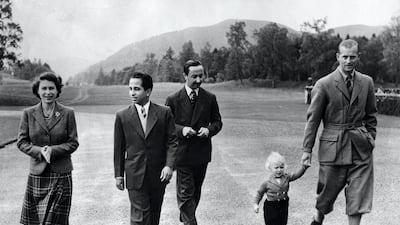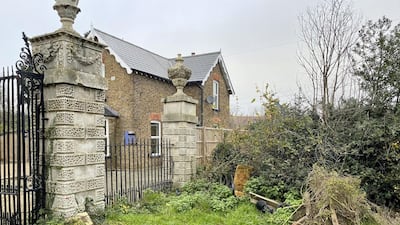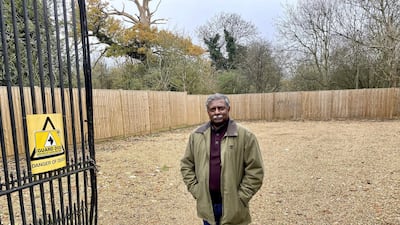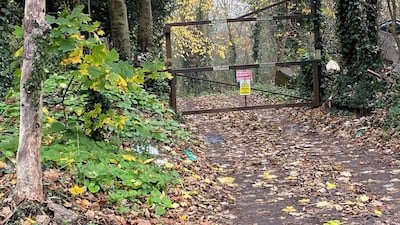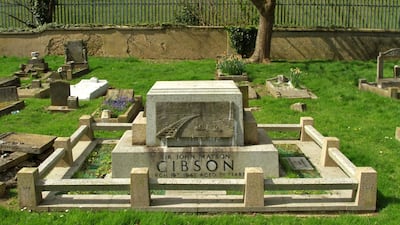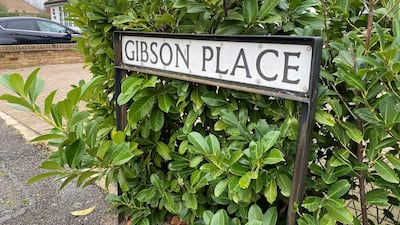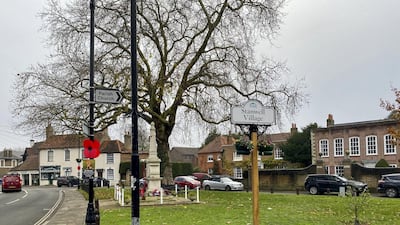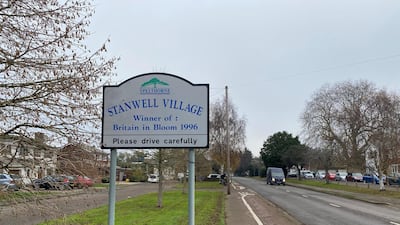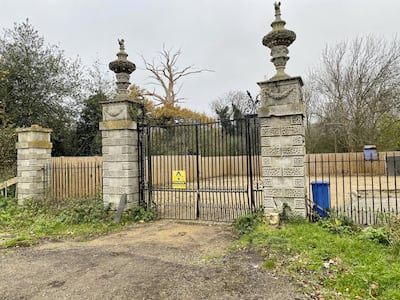Minutes from London’s Heathrow Airport, the Number 442 bus sweeps around a tight right-hand bend towards the quaint village of Stanwell in Surrey.
Passengers could be forgiven for failing to notice a set of gates set back on the left hand side, which for years were overgrown by brambles and encroaching woodland.
But these towering pillars, thought to have been built in the 18th century and capped with an intricate rose and ribbon design, are now the only clue to the previous existence of a mansion which was home to the last king of Iraq and played host to a key chapter of the Second World War.
A gate house is now available to rent and brings with it a chance to follow in the footsteps of history.
The gates were once the entrance to Stanwell Place, a manor house and estate constructed at least 250 years ago which spreads across 300 acres.
The final house to stand on the site, built in the early 1800s, was an imposing two-storey building, covered in ivy.
In the late 1940s, it was bought by the then 13-year-old King Faisal II of Iraq. He was attending Harrow School some 12 miles north, along with his second cousin Prince Hussein, later to become King Hussein of Jordan.
The house remained in his possession for around a decade, until he was assassinated in the 1958 coup.
The home was abandoned and became derelict.
Despite a local campaign to preserve the building, it was bought in the 1960s for gravel extraction and the impressive house demolished.
Local MP Kwarzi Kwarteng has previously described Stanwell Place as a “forgotten treasure… a house full of history, with sad associations”.
In 2016, he wrote that it was “much to the disappointment of local residents” that the house fell into disrepair and neglect after the brutal killing of the king before being finally torn down.
Today, all that can be seen of Stanwell Place, which is just a stone’s throw from the airport’s perimeter road, is thick woodland and undergrowth, cordoned off with wire fencing adorned with signs reading ‘Keep Out’, ‘Danger of Death’ and ‘Dangerous Dogs Running Loose’. Fly-tippers have dumped settees and rubbish along its edges.
One positive development, though, is that the area around the gates has been cleaned up and the Victorian lodge house renovated and set to be rented out. Quite an entrance for a family home.
Estate agent Abe Razack, who works in nearby Ashford and lived in Abu Dhabi in the 1980s, is something of a history buff. He laments that such a historic building could be razed.
Mr Razack told The National: "I've heard that people in the village remember the Iraqi king living here even though it was a long time ago.
“It’s a shame that a building that played a part in the war, and was home to a king, could be demolished. Nowadays there would be more people trying to keep such a building. But at least the lodge house is now available for someone to enjoy.”
In 1933, Sir John Watson Gibson, a civil engineer, bought the estate from the Gibbons family who had owned the manorial rights for the previous 180 years.
Sir John was a civil engineer and moved to Stanwell while building the nearby Queen Mary Reservoir at Littleton. He sold the majority of the land to the Metropolitan Water Board which developed it into the King George VI Reservoir.
The manor house, however, was to be used for top-level meetings in the build up to D-Day and the Normandy invasion, the start of the liberation of German-occupied France.
Sir John was deputy director-general of civil engineering at the Ministry of Supply 1943-44 and played a significant role in the construction of the top-secret Mulberry Harbours, temporary structures which could be used to allow the swift offloading of cargo on to the Normandy beaches. Sir John lent Stanwell Place for the war effort.
It was used by the Supreme Headquarters Allied Expeditionary Force and as such played host to commanders such as General George C. Marshall, General Dwight D. Eisenhower and General of the Air Force Henry H. Arnold.
Mr Razack said: “Stanwell as a village really sprang up after the war, with many people moving out of London to live here. There are lots of reminders of Sir John Gibson, including the street next to the lodge house and a pub in the village.
“The Gibson family still own the farm house. But a gravel company took over the house where King Faisal had lived. The area is well known for its gravel pits and that’s what became of the manor house.
“But at least now the area around the gates have been cleared away and look very impressive.”

